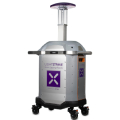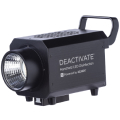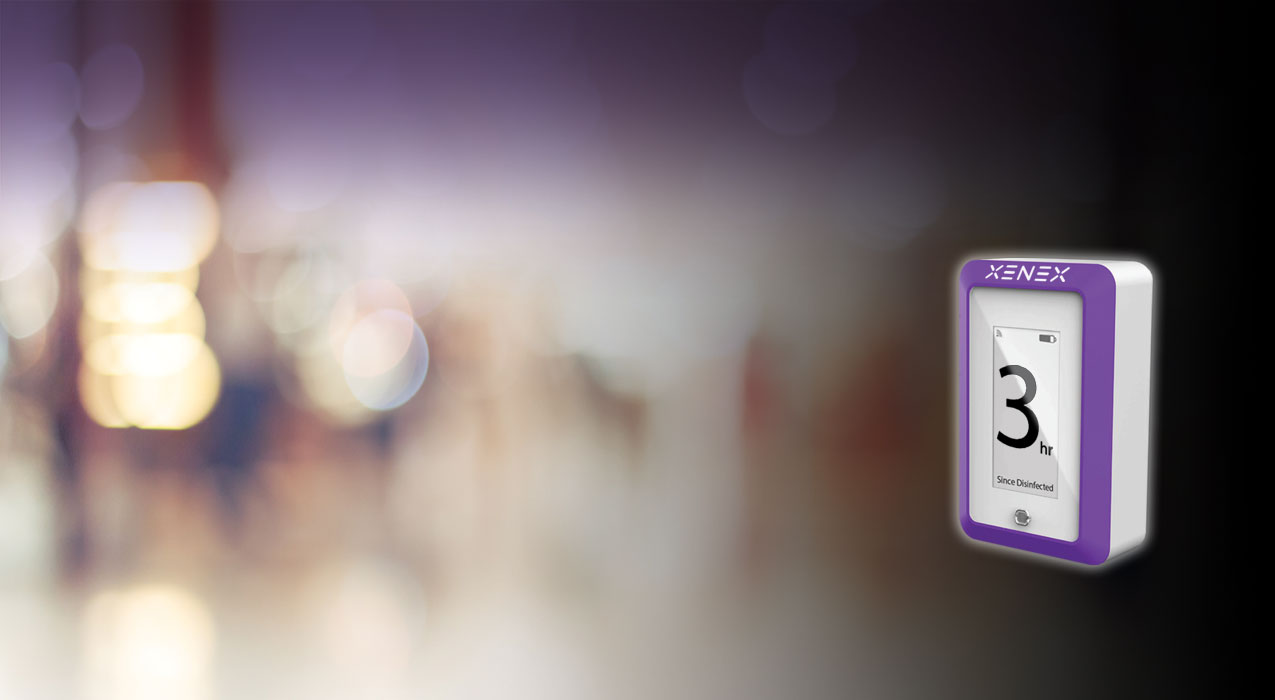Dr. Chetan Jinadatha, chief of infectious diseases at the Central Texas Veterans Health Care System-Temple, has dedicated his career to research and “taking care of the people who take care of us.” He’s published 54 peer-reviewed articles on topics related to disinfection and will present a poster at the upcoming APIC conference on strategies for contaminated Portable Medical Equipment (PME). We had the opportunity to conduct a brief interview with Dr. Jinadatha that left us feeling energized, optimistic, and positive about the work being done to create a better environment for healthcare workers and patients seeking care.
 Dr. Jinadatha says he originally got the “taste” (as he calls it) for bugs as a resident at Scott & White Medical Center. That was also around the time when he recognized the two missions (getting to do the job and serving our veterans) that would fuel his passion and commitment. He quickly realized that his research and work to discover much-needed solutions could go from helping one patient at a time to potentially impacting thousands of lives.
Dr. Jinadatha says he originally got the “taste” (as he calls it) for bugs as a resident at Scott & White Medical Center. That was also around the time when he recognized the two missions (getting to do the job and serving our veterans) that would fuel his passion and commitment. He quickly realized that his research and work to discover much-needed solutions could go from helping one patient at a time to potentially impacting thousands of lives.
One of Dr. Jinadatha’s favorite research projects, which has been patented by the VA and dates back to 2011, is coming to fruition. A first-of-its-kind solution called the Disinfection Tracking System (DTS) takes the guesswork out of healthcare workers’ minds regarding what mobile medical equipment is clean and disinfected or dirty. As Dr. Jinadatha said, “They all look clean, but they could be microbially dirty.”
Dr. Jinadatha got the idea for DTS when he noticed a woman transporting IV poles around the hospital and wondered if there was a better way (than a clipboard) to show and track what equipment had been disinfected. Various government agencies regularly conduct inspections and hospitals need to be able to show a log of when things are cleaned. “With automation, there’s no room for human error. People want to do the right thing – and the DTS enables them to easily see if something has been disinfected….or not. DTS takes the guesswork out of wondering if and when something was cleaned and disinfected, which makes reporting for compliance much easier.”
The small DTS device (which has a battery life of 3 years) shows when and how long mobile medical equipment is cleaned and disinfected. It can detect liquid chemicals and exposure to UV room disinfection technologies. The novel system connects to an automated platform to log, track and report on each piece of equipment that’s being monitored by the DTS device. Initially developed to track disinfection of the Computer on Wheels (“COWs”) used throughout the day going from room to room, DTS was quickly adopted to track disinfection of vitals machines, EKH, bear huggers, DVT Compression devices and wound suction equipment at the Olin E. Teague Veterans’ Medical Center in Temple. Feedback on the pilot program was very positive, as evidenced by 3 peer-reviewed journal articles evaluating the trial. Looking ahead, Dr. Jinadatha believes there are many more opportunities for tracking disinfection with DTS within healthcare facilities, such as the cafeteria, lab, and even mannequins.
“I have a deep appreciation for veterans and am focused on helping deliver world-class care. We are here to support the hardworking people who do such an important job – keeping the hospital clean.”
In addition to his DTS research, Dr. Jinadatha has published several peer-reviewed articles about the efficacy of pulsed xenon UV disinfection technology in reducing pathogens within healthcare facilities. The Central Texas VA system is a pioneer in the utilization of UV technology for room disinfection and one recent study found the LightStrike pulsed xenon UV light provides additional bioburden reduction to manual cleaning or disinfection, even when accounting for variability introduced by different disinfectants and EVS personnel.
“We need the best weapons in the battle against superbugs and that means equipping our teams with the best technology. The faster we get there, the better care we can provide to meet our goal – taking care of the people who take care of us.”
Click here to learn more about DTS technology.
DTS Published Research
- Capturing portable medical equipment disinfection data via an automated novel disinfection tracking system, AM J Infect Control. 2021 Oct;49(10):1287-1291. doi: 10.1016/j.ajic.2021.05.008.
- Frontline Nurse Feedback During the Development of a System to Track Cleaning of Portable Medical Equipment, Comput Inform Nurs. 2021 Nov 1;39(12):1035-1040. doi: 10.1097/CIN.0000000000000754.
- Effect of a “feedback prompt” from a disinfection tracking system on portable medical equipment disinfection, Am J Infect Control. 2022 Jan 23;S0196-6553(22)00020-7. doi: 10.1016/j.ajic.2022.01.004.

















